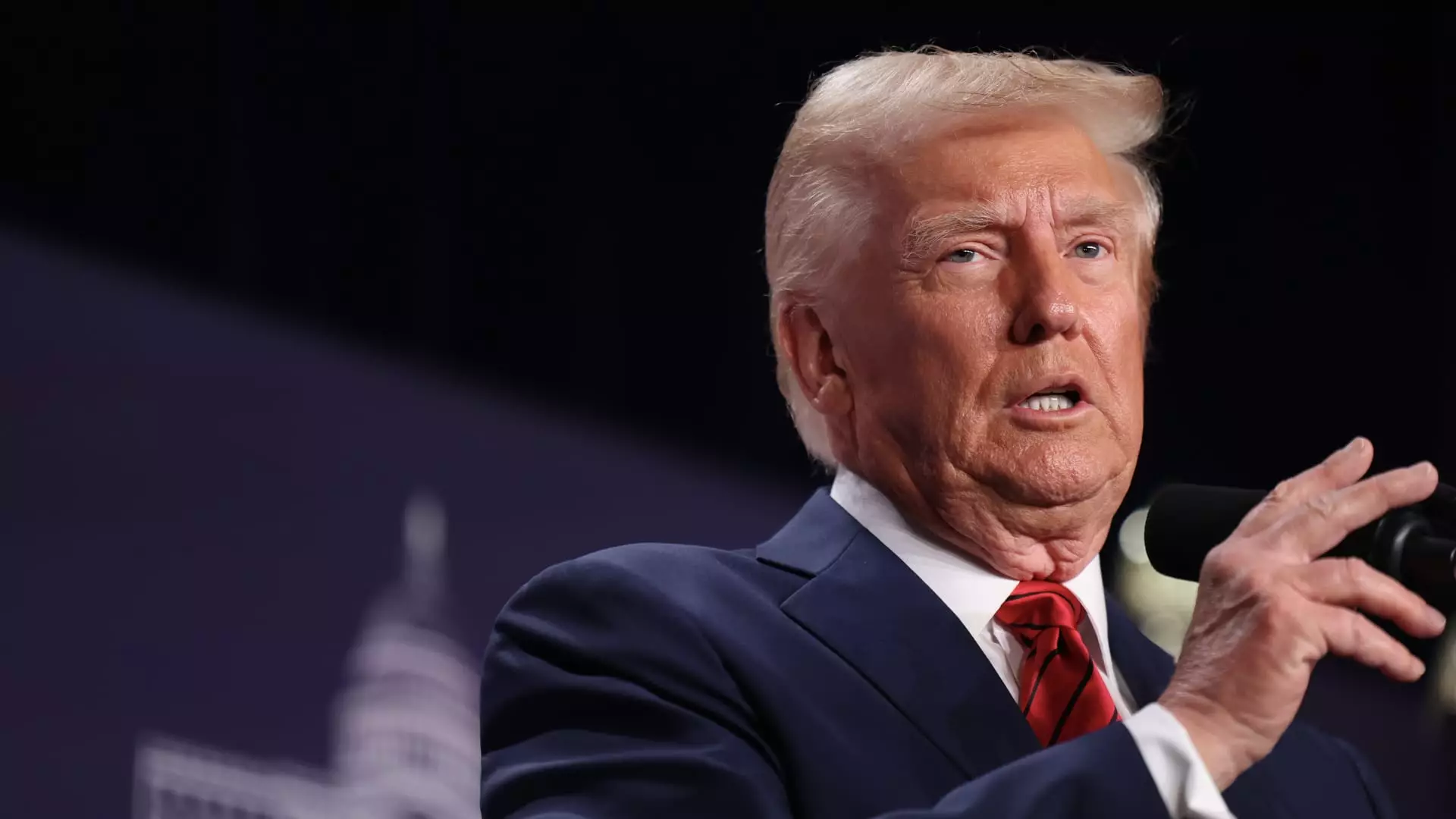Tariffs have been a subject of intense debate in the United States, especially under President Donald Trump’s administration. His administration’s decision to impose tariffs on imports from key trading partners such as Canada, Mexico, and China has raised alarms among economists who foresee dire consequences for the U.S. economy and consumers. While the government positions these tariffs as beneficial for American workers and industries, a deeper analysis reveals a more nuanced reality that consumers are likely to face increased costs and limited options.
Tariffs function as taxes levied on foreign imports, meaning that U.S. companies importing goods are charged additional fees by the federal government. As businesses grapple with these added costs, the inevitable response is to pass them down to consumers, translating into higher prices for goods. According to Mary Lovely from the Peterson Institute for International Economics, the notion that tariffs have any positive effects is misleading, as the ramifications tend to skew negative for the average consumer.
The figures paint a stark picture. For instance, with a proposed 25% tariff on imports from Canada and Mexico, alongside a 10% duty on Chinese products, the implications are economically significant. The U.S. imports hundreds of billions of dollars’ worth of goods annually from these nations, which makes them essential trading partners. For 2022, imports totaled approximately $536 billion from China, $455 billion from Mexico, and $437 billion from Canada—figures that underscore the magnitude of potential tariffs.
As tariffs take effect, consumers should brace for a dual impact: rising prices and a decline in product variety. Major brands may be forced to increase prices on the shelves as their input costs rise due to tariffs. The specter of higher consumer prices looms particularly large over industries heavily reliant on imports, such as electronics, apparel, and food items. For instance, China is the primary supplier of numerous consumer goods, contributing significantly to the U.S. inventory of toys, footwear, and electronics. Similarly, tariffs on food imports from Canada and Mexico could amplify grocery bills, as these nations account for substantial portions of U.S. food imports.
Moreover, the potential reduction in the diversity of available products is an issue of concern. Fewer imports could lead to less competition, further constraining consumer choices and driving prices upward. The combination of reduced options and higher expenses could strike a significant blow to American households, already grappling with rising costs in various segments of the economy.
The government paints a rosy picture of the economic future, projecting that tariffs could generate revenue and boost job growth. However, economists express skepticism regarding these assertions. A recent analysis suggests that proposed tariffs could yield $1.3 trillion in revenue by 2035. However, this revenue might only serve to mitigate the larger financial impact of tax cuts that could cost more than $5 trillion over a decade.
The risk of retaliatory tariffs from impacted nations presents a grave concern. History indicates that China is likely to respond to tariffs with its own punitive measures, and should this escalate into a trade war, the U.S. economy stands to lose significantly. Estimates suggest that a 10% additional tariff could lead to a contraction of the U.S. economy by $55 billion, while a 25% tariff on Canada and Mexico could reduce the GDP by $200 billion.
Advocates of tariffs tout the potential for job creation as a primary benefit. However, experts argue that the reality is far more complex. For every job claimed to be generated in tariff-protected industries, there are multiple jobs in related sectors that could be lost as businesses face rising costs. In the steel industry, for instance, for every steel-producing job, there are 80 jobs in industries reliant on steel as an input. This indicates a troubling net loss of employment when factoring in the broader implications of tariff implementation.
The concept of job creation via tariffs is, therefore, fraught with issues, ultimately leading economists to caution against their broad use. The collateral damage associated with tariffs could undermine not only individual sectors but also the overall health of the U.S. economy.
The implications of imposing tariffs on imports from Canada, Mexico, and China are extensive, touching on consumer prices, the diversity of goods, and overall economic health. While the government’s narrative emphasizes tariffs as a pathway to revitalization for American workers and industries, the underlying trends indicate potential pitfalls. History learns that economic measures wield complex outcomes; thus, policymakers should tread cautiously as they approach tariffs, balancing the purported benefits against the risk of significant harm to consumers and the economy at large. The stakes are undeniably high, and the need for a nuanced understanding has never been more critical.

